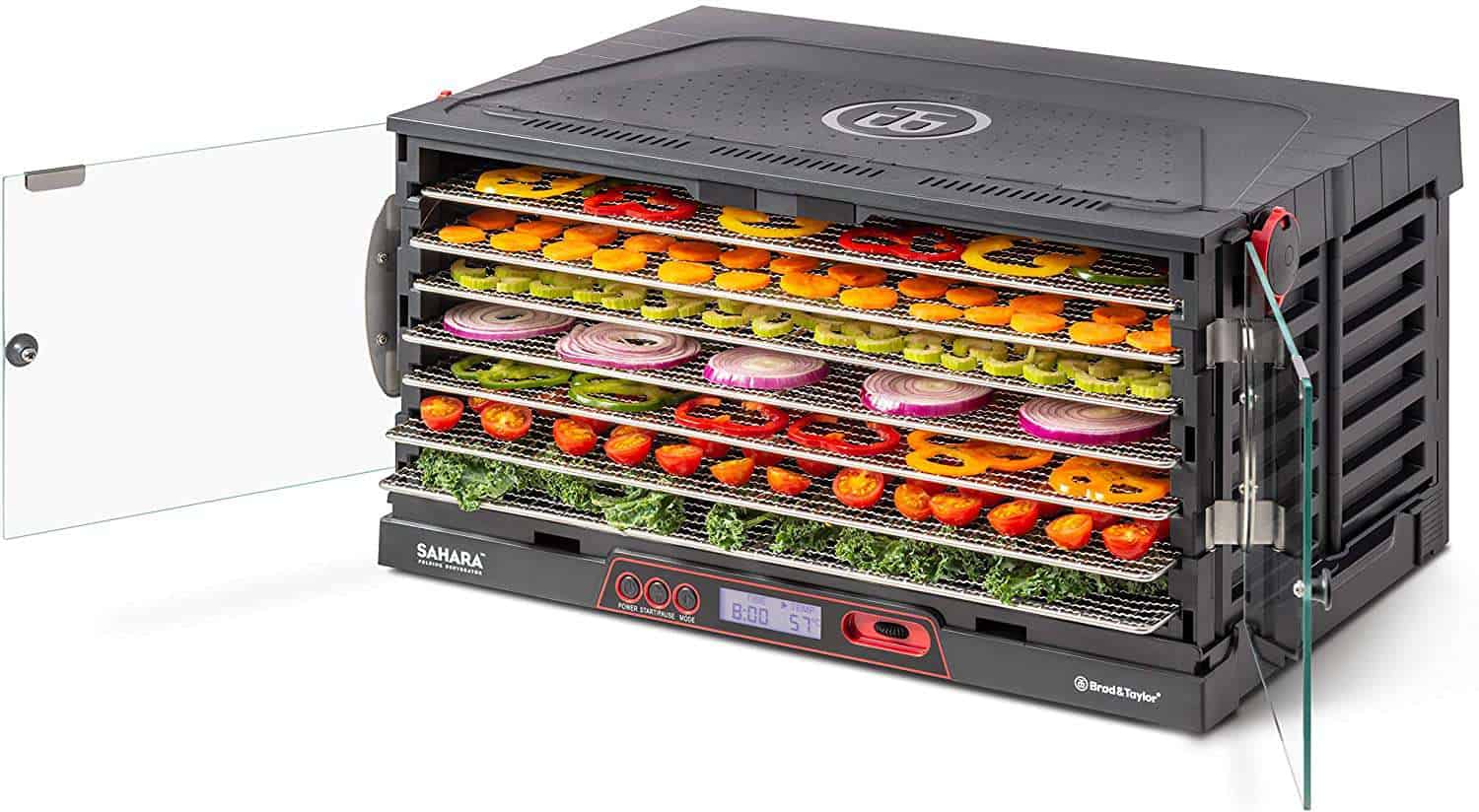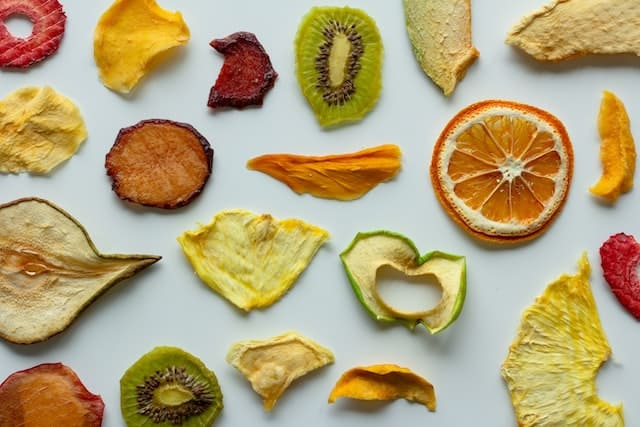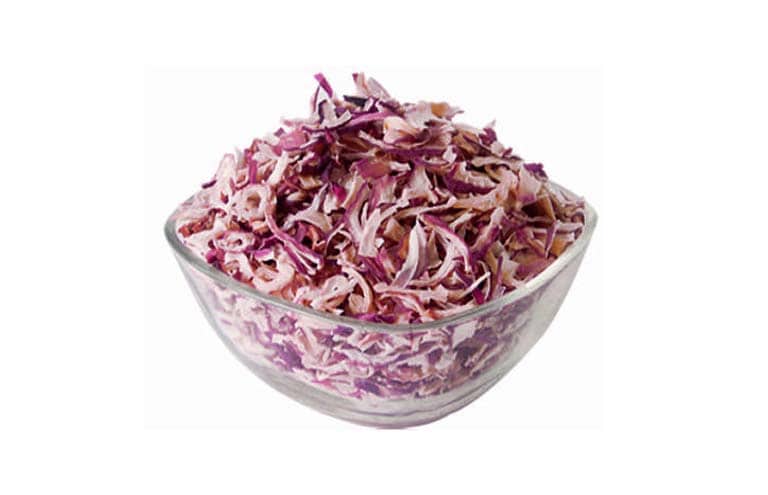If you are someone who enjoys cooking, then you are aware that onions are an essential component in a variety of different dishes. Fresh onions, on the other hand, are notoriously difficult to keep fresh for extended periods of time, and if they aren’t used within a few days after purchase, they swiftly go bad.
That’s where the convenience of dried onions comes in. Since they have been dried, these onions have a far longer shelf life than fresh onions do when they are kept in storage. But, if you want to use them in recipes, you may be curious about the best way to rehydrate them before you do so. The procedure of rehydrating dried onions is a simple one; nonetheless, it is essential to carry it out correctly in order to ensure that your meal does not wind up tasting odd.
This article will cover why you would want to use dehydrated onions in your cooking, how to rehydrate them correctly, and some helpful hints for incorporating them into some of your favorite dishes. So, let’s get started!
Benefits Of Dehydrating Foods

🟩 Preservation
Heat and air circulation are needed to dehydrate food. In locations without refrigeration or freezing, this approach has been used for generations to preserve food.
As food is dried, water activity decreases, reducing microbial growth. Dehydration prevents bacteria, yeast, and mold development because these microorganisms need water to thrive. Dehydrated food doesn’t rot and doesn’t require refrigeration or freezing.
Airtight containers or vacuum-sealed bags help keep dehydrated foods dry. The packaging prevents oxidation, which causes spoiling and rancidity. Dehydrated foods may survive for months or years if kept correctly.
🟩 Convenience
Dehydrated foods are lightweight, compact, and simple to store and carry. Since food loses moisture, it shrinks. Hence, dried goods are smaller and lighter than fresh or tinned ones.
Because of their portability, dehydrated meals are great for camping, hiking, and other outdoor activities. They won’t spoil on lengthy treks or camping vacations. Dehydrated goods last a long time, so you can stock up and put them in your cupboard.
Dehydrated foods are handy for home meals and snacks. Rehydrating them with water makes a hot supper in minutes. Some dehydrated meals are ready-to-eat, making them great snacks. This helps busy people who don’t have time to cook.
🟩 Nutritional value
Dehydration does not deplete vitamins and minerals like canning or freezing does. It is a great preservation method to maintain food nutrients. Most nutrients survive dehydration. Fiber, potassium, vitamin C, and folate are all maintained well during this process.
Several recipes utilize dehydrated veggies instead of fresh ones. They may be added straight to soups, stews, and casseroles or rehydrated by soaking in water. They are a healthy, portable snack that may be eaten alone or used to trail mixes.
🟩 Cost-effective
This ancient food preservation method is still used today because home food dehydration is simple and affordable. With a food dehydrator or oven, you can dry a variety of fruits, vegetables, and meats to make healthy, tasty snacks and ingredients that last for months.
Home dehydration saves money, too. Dehydrated food is cheaper than fresh, particularly those foods that are out of season.
Dehydrating food also reduces waste. Fresh food might be difficult to utilize before it spoils, which is why dehydrating fruits and vegetables extends their shelf life by months, reducing food waste. This is useful if you have a garden or surplus produce to preserve!
🟩 Flavor
Food dehydration removes water through sun-drying, oven-drying, and using a dehydrator. Water removal enhances taste components in food, and this flavor concentration makes dried foods more flavorful.
Dehydrating fruits and vegetables enhances their taste. Dehydrated fruits like raisins and prunes taste sweeter and stronger than fresh fruits. Sun-dried tomatoes and mushrooms taste stronger than fresh ones!
🟩 Health benefits
Dehydrated foods provide a lot of fiber. Fiber aids digestion and prevents constipation, and it may also help you feel full and regulate your weight.
Vitamins and minerals from dehydrated fruits and vegetables boost general wellness. Vitamins and minerals support immunological, bone, and energy functions. Dehydrated fruits and vegetables provide the nutrients your body needs to operate properly.
Dehydrated fruits and vegetables may substitute for unhealthy snacks like chips and sweets. Chips and candies may cause obesity, diabetes, and heart disease due to their high salt, sugar, and fat content. Dehydrated fruits and vegetables fulfill your appetite for a crunchy or sweet snack while supplying critical nutrients.
Methods Of Rehydrating Dehydrated Foods

🟦 Soaking
Hot water absorbs quicker than cold water, so it’s the most preferred when soaking dehydrated foods. Nevertheless, boiling water may break down food and reduce its nutritional value. That’s why foods rehydrate better in warm water.
Cover dried food with water to rehydrate it. This makes the food soft by absorbing fluids. Food rehydration time depends on kind and texture. Some meals rehydrate in hours, while others require overnight.
Rehydration should be done slowly without raising the water temperature. The meal may cook unevenly or break down, losing taste and texture, if you try to alter the temperature of the water.
🟦 Boiling
Water is completely boiled at 100°C or 212°F. Boiling rehydrates dried food quickly and easily. Backpackers, hikers, and other outdoor enthusiasts appreciate dehydrated food because it is lightweight, small, and long-lasting.
Rehydrating depends on the quantity and kind of meals. For every cup of dried food, use 1.5–2 cups of water. Add dehydrated food to boiling water and simmer. Water should cover the meal, stirring regularly, until the food softens and absorbs enough water.
Be sure the saucepan doesn’t boil over while cooking. Maintain a moderate simmer by adjusting the heat. To avoid food sticking to the pot, stir periodically.
After rehydrating, let the dish cool before serving. Soups, stews, casseroles, and more can use rehydrated food. It’s a healthy, portable choice for those who want a full supper outside.
🟦 Steaming
Rehydrating dried food gently using steam preserves texture and taste. Steaming is healthier than boiling or frying since it doesn’t use oil or fat.
Steaming dried food requires a steamer basket with tiny holes. Vegetables, rice, and other grains rehydrate nicely using steam. Steaming is fast and simple. On hectic weeknights, steaming most foods takes just a few minutes. Steaming can be used for everything from simple vegetable sides to complex entrees.
🟦 Microwaving
Microwaving swiftly heats food using high-frequency electromagnetic pulses. Because of its ease and speed, this method is popular with people who want to rehydrate dried food.
Start by putting dried food on a microwave-safe plate. Choose a microwave-safe dish that won’t melt or deform. Cover food with water and the food and quantity you’re rehydrating determine the water required.
Cover the dish after adding water. This traps steam and prevents food from drying out when microwaving. Microwave the dish at a high temperature for several minutes. Checking the food occasionally prevents overcooking and drying.
🟦 Using Broth
Rehydrating meals with broth adds a rich, delicious taste. Rehydrate dried food by combining it with enough broth to cover it. Rehydrating food requires different amounts of broth. Generally, use 1 1/2 to 2 cups of broth per cup of dried food.
Let the food soak in broth until soft. Soaking times range from 20 minutes to an hour or more, depending on the meal. Stir periodically to uniformly rehydrate the food.
This approach rehydrates soups, stews, and other savory meals nicely. The broth adds taste, protein, vitamins, and minerals. Depending on your taste, you can use chicken, beef, vegetable, or mushroom broth.
Common Foods That Can Be Dehydrated
🟧 Fruits
Dehydrated apple chips may be finely cut to become healthy chips. Sliced and dried bananas make chewy banana chips, while dehydrated berries are also nutritious snacks. Dried mango slices are chewy and tasty, making them excellent for snacks or baking. Sliced onions may also be dried into crispy onion chips for salads and soups.
🟧 Vegetables
Dehydrated carrots can become crispy snacks. Soups and stews can also be garnished with dried corn from the cob. Trimmed and desiccated green beans create a healthy, crispy snack. Sliced and dehydrated mushrooms are great for sauces and soups. Peppers may be cut and dried for snacking or spice combinations. Slice and dried tomatoes are used for pasta.
🟧 Meat
Beef jerky is a popular snack that may be made by slicing beef very thinly and then drying the slices. For the purpose of using it in soups or stews, chicken may be cooked, shredded, and then dried. Fish may be smoked and then dried out to form a delicious jerky-like snack. It is possible to slice a turkey breast and then dehydrate it so that it may be used in sandwiches or as a snack.
🟧 Nuts
It is possible to dehydrate almonds so that they may be used as a snack or in baked dishes. Cashews, after drying out, may also be consumed as a snack or included in stir-fries. Dehydrated peanuts may be ground into peanut butter or eaten on their own as a snack. Walnuts, after being dried, may be used either as a snack or as an ingredient in baked goods.
🟧 Grains
Rice recipes need to be cooked, dehydrated, and rehydrated. Quinoa uses the same process if used for salads and side dishes. Dehydrated oats are generally used to make granola or sprinkled over yogurt or smoothie bowls. Onion flakes are also a popular flavoring made from dehydrated onions and can be tossed in lots of dishes.
🟧 Dairy
Cheese crisps, a popular kind of food, may be made by slicing cheese very thinly and then dehydrating the slices. Smoothies and baked products may both benefit from the addition of taste and nutrition from yogurt powder, which can be made by dehydrating yogurt and then grinding it into a fine powder. Dehydrated onions may also be used as a flavoring component to cheese crisps and other types of snacks.
🟧 Herbs
Dried basil leaves may be added to spice mixes or used on their own as a flavoring. Oregano, after being dried, may be used as a spice or in the preparation of Italian meals. Dehydrated rosemary may be combined with other spices or used on its own as a condiment. Dehydrated thyme may be used as a flavoring or as an ingredient in meals inspired by Mediterranean cuisine. In addition, onions may be dried up and powdered into onion powder, which is a common kind of flavoring.
How To Rehydrate Dehydrated Onions

Rehydrating dehydrated onions is a simple process that can be done quickly and easily. Here are the steps:
- Place the desired amount of dehydrated onions in a bowl.
- Cover the onions with hot water. Use enough water to fully submerge the onions.
- Let the onions sit in the hot water for 15-20 minutes, or until they are fully rehydrated and plump.
- Drain the excess water from the bowl.
- If you plan on using the rehydrated onions in a recipe that requires sautéing or cooking, you can pat them dry with a paper towel before using.
Note: If you don’t have hot water readily available, you can use room-temperature water instead. Just be aware that it will take longer for the onions to rehydrate in cool water.
Lifespan Of Dehydrated Onions
Well-preserved dehydrated onions survive a long time. Dehydrated onions may keep for two years or more in an airtight container in a cold, dry environment. Dehydrated onions’ lifespan depends on onion quality, the dehydration process, and storage circumstances.
Moisture and humidity may degrade or mold dehydrated onions. Discard dried onions if they have a musty smell, discoloration, or mold.
Final Words
Rehydrating dehydrated onions is easy and may save time in the kitchen. They can still be used just like fresh onions and have the same taste. They may top your favorite meals or be added to soups and stews!
Just remember to rehydrate dried onions in warm water for at least 15 minutes to restore their suppleness and volume. Follow these simple methods to cook with dried onions without sacrificing flavor or quality. If you need onions for a recipe in a hurry, try rehydrating dried onions!
For the next herb guide, just click here!
